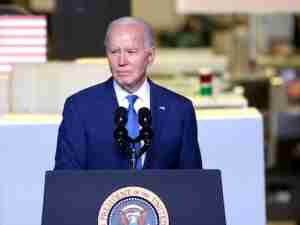Canada’s Trade Deficit Unexpectedly Widens on Auto Sector Bounce
By: Theophilos Argitis | Jan 05 2018 at 08:30 AM | International Trade
By: Theophilos Argitis | Jan 05 2018 at 08:30 AM | International Trade
U.S. Trade Representative Katherine Tai today released the following statement concerning the statutory review of the tariff actions in the Section 301 investigation of China’s Acts, Policies, and Practices Related…
View ArticleTunisia, which has ghosted the International Monetary Fund and feuded with Europe over aid for its languishing economy, has turned olive oil exports into a money spinner to help keep…
View ArticleAs President Joe Biden prepares a new wave of tariffs against China, a US soybean trade group is pushing for higher levies on Chinese used cooking oil that it says…
View ArticleThe President signed H.R. 1042, the Prohibiting Russian Uranium Imports Act, into law May 13, 2024. This bipartisan legislative action prohibits the import of Russian uranium products into the United…
View Article

© Copyright 1999–2024 American Journal of Transportation. All Rights Reserved